
A tokamak is a device which uses a powerful magnetic field generated by external magnets to confine plasma in the shape of an axially symmetrical torus. The tokamak is one of several types of magnetic confinement devices being developed to produce controlled thermonuclear fusion power. The tokamak concept is currently one of the leading candidates for a practical fusion reactor.
This timeline of nuclear fusion is an incomplete chronological summary of significant events in the study and use of nuclear fusion.

The Joint European Torus (JET) was a magnetically confined plasma physics experiment, located at Culham Centre for Fusion Energy in Oxfordshire, UK. Based on a tokamak design, the fusion research facility was a joint European project with the main purpose of opening the way to future nuclear fusion grid energy. At the time of its design JET was larger than any comparable machine.
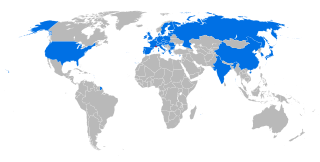
ITER is an international nuclear fusion research and engineering megaproject aimed at creating energy through a fusion process similar to that of the Sun. It is being built next to the Cadarache facility in southern France. Upon completion of construction of the main reactor and first plasma, planned for 2033–2034, ITER will be the largest of more than 100 fusion reactors built since the 1950s, with six times the plasma volume of JT-60SA in Japan, the largest tokamak operating today.

Magnetic confinement fusion (MCF) is an approach to generate thermonuclear fusion power that uses magnetic fields to confine fusion fuel in the form of a plasma. Magnetic confinement is one of two major branches of controlled fusion research, along with inertial confinement fusion.

Mega Ampere Spherical Tokamak (MAST) was a nuclear fusion experiment, testing a spherical tokamak nuclear fusion reactor, and commissioned by EURATOM/UKAEA. The original MAST experiment took place at the Culham Centre for Fusion Energy, Oxfordshire, England from December 1999 to September 2013. A successor experiment called MAST Upgrade began operation in 2020.

The Institute for Plasma Research (IPR) is a public research institute in India. The institute conducts research in plasma science, including basic plasma physics, magnetically confined hot plasmas, and plasma technologies for industrial applications. It is the leading plasma physics organization of India and houses the largest tokamak of India - SST1. IPR plays a major scientific and technical role in Indian partnership in the international fusion energy initiative ITER. It is part of the IndiGO consortium for research on gravitational waves. It is an autonomous body funded by the Department of Atomic Energy.

The National Spherical Torus Experiment (NSTX) is a magnetic fusion device based on the spherical tokamak concept. It was constructed by the Princeton Plasma Physics Laboratory (PPPL) in collaboration with the Oak Ridge National Laboratory, Columbia University, and the University of Washington at Seattle. It entered service in 1999. In 2012 it was shut down as part of an upgrade program and became NSTX-U, U for Upgrade.
IOP Publishing is the publishing company of the Institute of Physics. It provides publications through which scientific research is distributed worldwide, including journals, community websites, magazines, conference proceedings and books. The Institute of Physics is a scientific charity devoted to increasing the practice, understanding and application of physics. Any financial surplus earned by IOP Publishing goes to support physics through the activities of the Institute.
SST-1 is a plasma confinement experimental device in the Institute for Plasma Research (IPR), an autonomous research institute under Department of Atomic Energy, India. It belongs to a new generation of tokamaks with the major objective being steady state operation of an advanced configuration plasma. It has been designed as a medium-sized tokamak with superconducting magnets.
Derek Charles Robinson FRS was a physicist who worked in the UK fusion power program for most of his professional career. Studying turbulence in the UK's ZETA reactor, he helped develop the reversed field pinch concept, an area of study to this day. He is best known for his role in taking a critical measurement on the T-3 device in the USSR in 1969 that established the tokamak as the primary magnetic fusion energy device to this day. He was also instrumental in the development of the spherical tokamak design though the construction of the START device, and its follow-on, MAST. Robinson was in charge of portions of the UK Atomic Energy Authority's fusion program from 1979 until he took over the entire program in 1996 before his death in 2002.
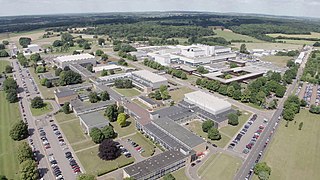
The Culham Centre for Fusion Energy (CCFE) is the UK's national laboratory for fusion research. It is located at the Culham Science Centre, near Culham, Oxfordshire, and is the site of the Joint European Torus (JET), Mega Ampere Spherical Tokamak (MAST) and the now closed Small Tight Aspect Ratio Tokamak (START).
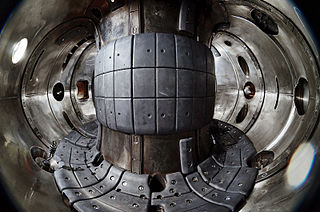
COMPASS, short for Compact Assembly, is a compact tokamak fusion energy device originally completed at the Culham Science Centre in 1989, upgraded in 1992, and operated until 2002. It was designed as a flexible research facility dedicated mostly to plasma physics studies in circular and D-shaped plasmas.

Sir Steven Charles Cowley is a British theoretical physicist and international authority on nuclear fusion and astrophysical plasmas. He has served as director of the United States Department of Energy (DOE) Princeton Plasma Physics Laboratory (PPPL) since 1 July 2018. Previously he served as president of Corpus Christi College, Oxford, since October 2016. and head of the EURATOM / CCFE Fusion Association and chief executive officer of the United Kingdom Atomic Energy Authority (UKAEA).
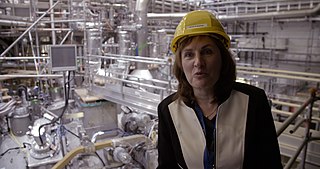
Sibylle Günter is a German theoretical physicist researching tokamak plasmas. Since February 2011, she has headed the Max Planck Institute for Plasma Physics. In October 2015, she was elected a member of the Academia Europaea in recognition of her contribution to research.

Ksenia Aleksandrovna Razumova is a Russian physicist. She graduated from the Physical Faculty of Moscow University in 1955 and took a position at the then called Kurchatov Institute of Atomic Energy in Moscow, then USSR. She defended her Ph.D. in 1966, was Candidate in Physical and Mathematical sciences in 1967, and became Doctor of Sciences in 1984. She is laboratory head at the Institute of Nuclear Fusion, Russian Research Centre Kurchatov Institute. Since the beginning she is actively involved plasma physics in research on the tokamak line of Magnetic confinement fusion.
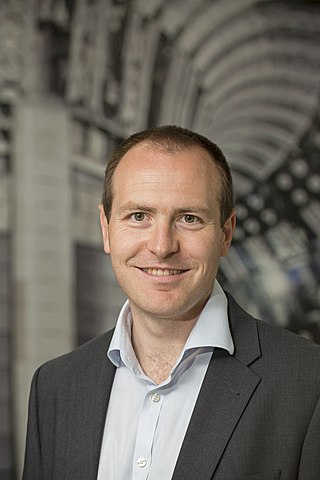
Sir Ian Trevelyan ChapmanFRS is a British physicist who is the chief executive of the United Kingdom Atomic Energy Authority (UKAEA).
Tokamak Energy is a fusion power company based near Oxford in the United Kingdom, established in 2009. The company is pursuing the global deployment of commercial fusion energy in the 2030s through the combined development of spherical tokamaks with high-temperature superconducting (HTS) magnets. It is also developing HTS magnet technology for other applications.
The history of nuclear fusion began early in the 20th century as an inquiry into how stars powered themselves and expanded to incorporate a broad inquiry into the nature of matter and energy, as potential applications expanded to include warfare, energy production and rocket propulsion.












